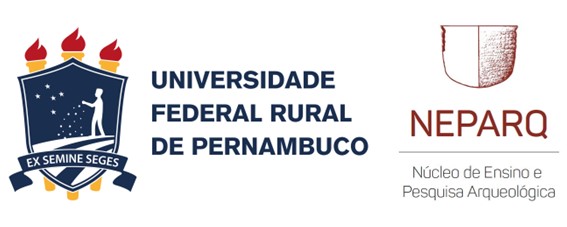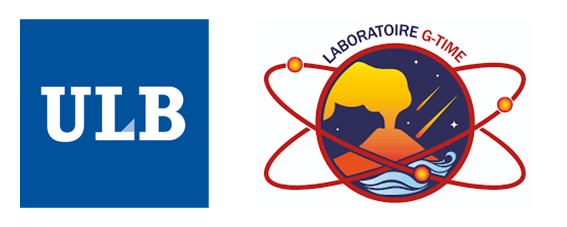Institutional members
We sincerely thank our institutional members for their invaluable support of the IsoArcH association. Your commitment is deeply appreciated and plays a vital role in advancing our mission and fostering a global community of isotope bioarchaeologists and researchers.
The inter-faculty AMGC research group is trans-disciplinary in nature merging expertise in archaeology & archaeological science, geology, geo- & cosmo-chemistry, anthropology, paleoenvironmental & paleoclimate reconstructions, past and present global changes, chemical engineering, analytical chemistry and environmental science to answer important questions about the past, the present, and the future of the Solar System, Planet Earth, and Humankind. The research themes covered by AMGC relate to Planet Earth and its global evolution with a particular focus on the place and role of life in general (humans, animals, plants) together with interactions and reciprocal impacts between biotic and abiotic ecosystems. The 2 major research objectives (RO) are: RO1. Understand Earth formation, within the solar system, and the causes, mechanisms, consequences of the major environmental/climate/biotic changes that shaped its evolution from 4.5 billion years ago until today. RO2. Shed light on behavioral patterns of humans, animals, and plants, reconstruct the sociocultural organization of past communities, and document the impact of life on the environment (and reciprocally) in the past and the present, as exemplified by ongoing anthropogenic activities. These two RO’s converge around the use of state-of-the-art analytical laboratories (Mass spectrometry, X-Ray Fluorescence, Infra-red Spectroscopy, Bio-assay…), which are part of the core facility “Material Characterization”, cross fertilizing each other through the development of innovative analytical methodologies. Research themes range from documenting the extra-terrestrial flux of materials to Earth through time, impact cratering and mass extinctions and high-resolution paleoclimate reconstructions, to landscape-, geo- and bio-archaeology in Europe and the Mediterranean, as well as monitoring pollution in soils, rivers, lakes and oceans. This union boosts a new complementary focus on how ancient human populations and societies were impacted by climate changes and, in return, how their evolution modified past environments, and landscapes.
The Brussels Bioarchaeology Lab (BB-LAB) of the Vrije Universiteit Brussels (VUB), Belgium, regroups researchers focussing on the study of human, animal and plant remains from archaeological contexts using a wide range of methods going from isotope geochemistry and spatial modelling to archaeobotany and osteoarchaeology. The members of the BB-LAB have backgrounds in archaeology, (geo)chemistry, history and biology, bringing together expertise from a wide range of fields and aiming at answering key questions about our past. Established in 2021 by Christophe Snoeck to increase the synergy between researchers carrying out bioarchaeological research, the BB-LAB is a sub-group of the Analytical, Environmental and Geo-Chemistry Research unit (AMGC) and the Multidisciplinary Archaeological Research Institute (MARI). The on-going projects carried out by the members of the BB-LAB are covering all of Europe and range from the Mesolithic to the Modern Period. The BB-LAB can rely on the impressive analytical arsenal available at the VUB to carry out state-of-the-art bioarchaeological research.
The tendency for isotope analysis to become an indispensable method in archaeological research has continued in cultural heritage research and forensic investigation. Therefore, a small research group within the Geology & Geochemistry cluster is focused on the scientific analysis of archaeological material (organics and inorganics), cultural heritage, and forensic samples to aid human identification processes. The Isotope Archaeology & Forensics group at VU is the only research unit in the Netherlands with the requisite staff, experience, and facilities to carry out these varied geochemical analyses.
Staff members of the Institute of Archaeology (IoA) at the University of Gdańsk lead and collaborate in various research projects in which biomolecular methods are applied to study human, animal and plant remains from archaeological record. Moreover, archaeological sciences are applied extensively by the research group within the Conservation Laboratory. IoA has a well-established collaborative network in Europe and world-wide, participating in the European University of the Seas (SEA-EU) alliance. Since 2023, it collaborates with the Organic Geochemistry Unit (OGU) at the University of Bristol (School of Chemistry), UK. The on-going projects carried out by IoA’s staff are focusing on northern Poland and the southern basin of the Baltic Sea, as well as the Eurasian steppe, Greece and Aegean Islands, and the Near East.

The Center for Teaching and Archaeological Research, known as NEPARQ (Núcleo de Ensino e Pesquisa Arqueológica), at the Federal Rural University of Pernambuco (UFRPE) in Brazil, boasts a dedicated team of staff members who lead and collaborate on various archaeological research projects across South America. Our primary focus is on Brazil and Uruguay, where we primarily investigate the history of Indigenous Peoples before the 15th-century European invasions. Additionally, we delve into contexts of historical occupation from the 16th century onward, including significant sites related to the African and Jewish diaspora. In all of our projects, we employ isotope biochemistry methods, complemented by a range of other bioarchaeological analyses, such as osteoarchaeology, zooarchaeology, and archaeobotany. It is worth noting that in Brazil, there remains a shortage of researchers who integrate biomolecular methods with bioarchaeological research. Furthermore, there is a lack of specialized infrastructure for conducting isotope biochemistry analysis specifically tailored to archaeology. NEPARQ has taken the initiative to bridge these gaps.

For over 50 years, the G-Time Laboratory has gained international recognition in the field of isotopic geochemistry. With cutting-edge analytical instrumentation unique in Belgium and exceptional expertise, the G-Time Laboratory stands out on the international stage for its know-how in four primary research areas. Initially, chemical purification methodologies and analysis of radiogenic isotope ratios (such as lead, strontium, etc.) using mass spectrometers (TIMS and MC-ICP-MS) were developed for plutonic and volcanic rocks. This enabled dating, determining their origin, and shedding light on the dynamics of the Earth’s interior, including the functioning of mantle plumes (such as Kerguelen, Hawaii, the Azores, etc.). Thus, GTime is a reference laboratory in volcanology and petrology. These techniques were subsequently adapted for non-traditional stable isotopes (such as zinc, copper, calcium, etc.) to address environmental and biomedical issues. With the advent of the new generation of mass spectrometers (MC-ICP-MS), new isotopic systems became accessible. They allow us to understand the processes or variables (temperature, pressure, pH, redox conditions) that control the evolution and fractionation of metals during biogeochemical cycles affecting living organisms and environmental reservoirs. Thus, it became possible to trace the origin of anthropogenic and natural pollutants, for example in livestock influenced by their diet, or in honey, which serves as an excellent biomonitor for air quality. Similarly, these techniques have allowed archaeologists, with whom the G-Time Laboratory closely collaborates, to identify the origin of our ancestors (based on the isotopic composition of bones, blood, hair, etc.) and trace the migration of ancient populations. Finally, in the space sector, our laboratory has advanced expertise in cosmochemistry and studies meteorites to reconstruct the birth of our solar system. Notably, the laboratory participates in NASA’s Mars2020 project and the operations of the Perseverance rover. The goal of this mission is to return Martian samples directly collected from the surface of Mars to Earth to search for signs of life on Mars and understand its geological evolution, including the presence of water on the Martian surface in the past. The G-Time Laboratory will have access to these samples to determine their geochemical and isotopic composition. This project constitutes a significant achievement that combines the expertise developed by the G-Time Laboratory in geological materials and the more recent expertise in organic samples, opening up a plethora of research possibilities.

The Department of Anthropology at Masaryk University (Brno, Czech Republic) is one of the leading institutions striving to apply state-of-the-art methods in both basic and applied research in biological anthropology. Over the past two decades, we have developed extensive expertise in advanced 3D recording and digitization technologies, including 3D printing, virtual reality, CT or uCT scanning, and advanced histological methods. Since 2022, we have further broadened our capabilities in isotope bioarchaeology by developing new facilities and actively participating in the IsoArcH initiative, with Masaryk University now proudly hosting the comprehensive database.



